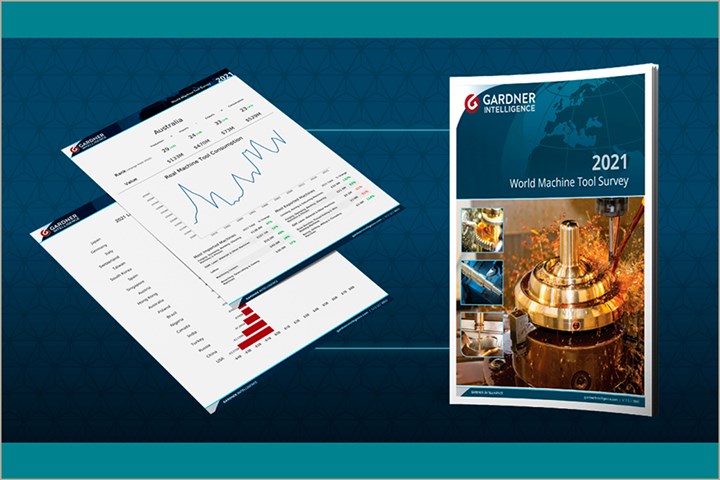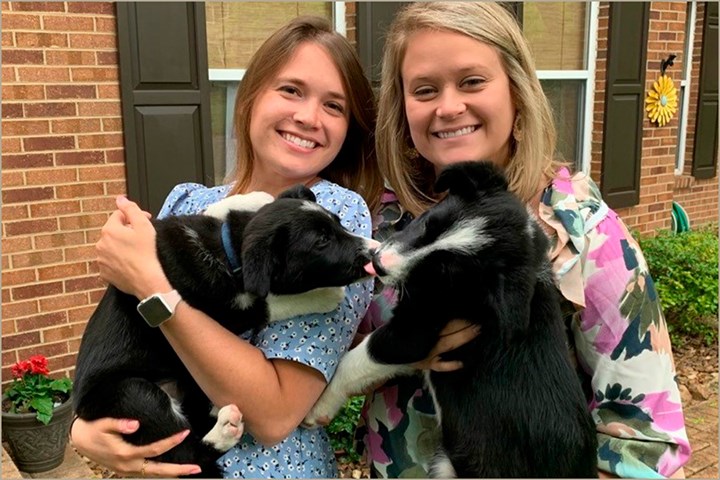Worth the Wait
Jan Schafer, Director of Market Research, Gardner Intelligence, Gardner Business Media, says it wasn’t’ the subject matter that transferred to Gardner from her 30 years of market research in consumer goods, it was the objectives, solutions, and skills that were just as relevant.
#customerfocus
Employee Spotlight Profile
Jan Schafer, Director of Market Research, Gardner Intelligence, Gardner Business Media
It was at least 20 years ago when, one Sunday morning on our one-mile drive from St John Fisher Church to Newtown Farm Market, my husband first pointed out Gardner’s office building and asked, ‘why don’t you look into working there? It would be an 8-minute commute and free parking.’ My quick response was, ‘they publish trade magazines. What in the world would they have to do with the likes of me?’
Three employers later (all within a four-block radius in downtown Cincinnati . . .), turns out I did land a job on Gardner’s Intelligence team.
What do toothpaste, baking mixes, diapers, and cold remedies have in common with workholding, purging compounds, lathes, and cutting tools? Not much that meets the eye.

But it’s not the subject matter that transferred to Gardner from my 30 years of market research in consumer goods, it was the objectives, solutions, and skills that were just as relevant.
It was like winning the lottery to be able to reapply my experience to a new-to-me territory at that stage in my career. I got to LEARN again, and I’m happy to say I STILL am!
I mean, how often does one get to address cool questions like these:
- What’s the industrial molds buying journey?
- What’s the usage level and preferred features for combination belt and disc finishing machines?
- How does one succeed in 3D printing in manufacturing, for metals applications, specifically?
- How do different elements of messaging contribute to a brand’s value proposition and influence the perceptions that messaging is intended to drive?
- How do awareness, usage, and perceptions of brands in the (insert manufacturing category) compare?
Every question presents as a puzzle I am challenged to solve, or at least inform, so better decisions are made and business is built. The fundamentals are universal, in work and in life:
- Start with the end in mind: define what needs to be known/decided
- Clearly articulate a single-minded objective
- Determine the questions and analyses that address the objective
- Describe ‘who matters’ to the objective
- Develop an analysis plan/how to view the data
For the most part, the classic research approach has served me well in manufacturing. And when tried and true do not work, I regroup and try a different approach.
It has also helped that I’ve been on the periphery of manufacturing for years, surrounded by engineers at Purdue, on leadership teams with product supply, production development, R&D colleagues, and married to a career sales guy in manufacturing.
Combined with the wealth of industry knowledge that resides within Gardner’s halls, unparalleled access to relevant populations, insights from the standard industry programs we support, and the teamwork Gardner encourages, I know that the Intelligence Team has contributed to clients’ businesses as well as Gardner’s. How satisfying is that?!
I didn’t always know the impact I had at my big global employers, making Gardner a particularly welcomed transition. After all, I knew it would be an easier transition than a career move in the opposite direction. And ‘easier,’ it was, even though it took me at least 3 months to barge into my boss’s office next door rather than set time on his calendar, even for the simplest question. To this day I hesitate to walk into a corner office unannounced. But was it ‘easy’ in the absolute? Not really.
There are two sides to most organizational protocols. For example, traditional human resource departments can impose a lot of (dare I say ‘unnecessary’) rules. At the same time, they typically own things like organizational charts that can be useful to newbies trying to navigate decision making hierarchies. And while SOP’s can be restrictive, they save time relative to muddling through.
But to me, everything’s an equation, and Gardner came with a lot more upside. The ways it was not familiar got me outside of my comfort zone, nudged me to develop new ways of working, take more risk, get things done in different ways. ‘New and different’ is hardly ever a bad thing in my book.
From the time I joined Gardner, there were raised eyebrows and occasional comments, as I was an atypical hire at the time. I was not related to anyone at Gardner. I didn’t even know anyone at Gardner.
I had already enjoyed a 30-year career in market research that included Procter and Gamble, my own research gig (with P&G as one of my clients,) supply side research at Ipsos (with P&G as my only client) and Convergys for exposure to the ‘customer experience’ rage. It was when that job went stale that I visited INDEED one midnight and saw a posting for a market research position at Gardner. Who knew that Gardner would have something to do with the likes of me?
Having shaped the first research position supporting P&G’s multi-billion-dollar global media budget may have had something to do with my resume getting Gardner’s attention.

And if nothing else, I am resourceful. I put out feelers to everyone I knew working in Newtown and everyone I knew who might know someone working in Newtown. Turns out one of those contacts got a recommendation to Rick Jr’s neighbor who happened to be celebrating Cinco de Mayo with him at the time that message came through. Thanks to a stellar training ground, a little help from my friend, and a lot of luck . . . well, you know the rest of the story.
Need more information?
Jan Schafer, Director of Market Research
Gardner Intelligence
Gardner Business Media, Inc.
513-527-8952 800-950-8020
LinkedIn
About the Author
Jan Schafer
Jan hails from the Hoosier state with a B.A. in psychology from Purdue University and an MBA from Indiana University. She’s lived in greater Cincinnati for 36 years, currently in Anderson Township with her husband and two high energy mutts. Her eldest daughter lives in Villa Hills, KY, is married with a baby on the way and does good work with Easter Seals helping young adults with special needs develop job skills and land employment. Her younger daughter lives in Chicago with her new pup and is setting the world on fire selling for DocuSign. She says, “I am blessed in every way.”
RELATED CONTENT
-
Customer Obsession? Really?
Is customer obsession the right way to differentiate your brand and build preference and loyalty? This B2B marketing expert says there is a better way and shows how managing four factors can lead to marketing nirvana.
-
Setting Yourself Up to Be a Commodity? What’s Your Edge?
Whether good times or bad, we should all heed Alexa Von Tobel’s advice about staying close to our customers. As more organizations try to keep up with the latest tech trend and increase their focus on digital channels, human to human contact is on the verge of extinction. In fact, according to a report by PwC, a staggering 59% of consumers feel that companies have lost touch with the human element of the customer experience. A significant part of customer experience is about increasing human contact between your brand, your company, and your customers.
-
5 Reasons to Prepare Now for the Year 2020 with Buyer Insights
The year 2020 beckons on the horizon. A pivotal year for organizations as the rapid evolution of a customer-centric world calls for new approaches and new forms of interactions. While one eye will be on succeeding in 2019, forward-thinking leaders will have another eye towards preparing for a new decade in 2020. What are 5 reasons and key forces forward-thinking leaders will need to gain in-depth buyer insights on for the year 2020?


